As we know, in the world of the Internet all devices have an IP address. In fact, it is nothing less than an identification number. Any device for surfing the Internet has its unique IP address for sending and receiving information. IP stands for Internet Protocol or, in Portuguese, Internet Protocol. This is the address on the network, that is, the data necessary for internet connections to be established.
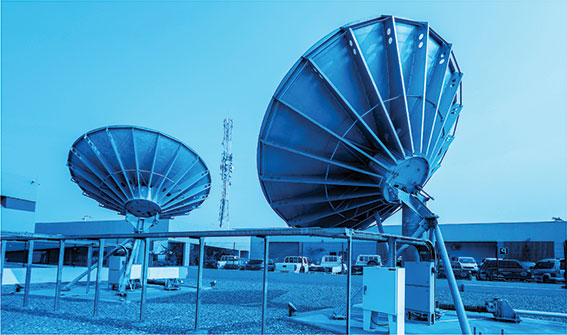
Much is said about digitization, IoT, Machine learning, AI, etc. It is important to take a step back and realize that until then everything was resolved with IPv4, or better said, IP version 4. These addresses are assigned by an entity called AFRINIC (African Network Information Center) which in turn reports to a higher entity called IANA (Internet Assigned Numbers Authority).
AFRINIC https://www.afrinic.net is the entity responsible for allocating / assigning IP addresses on the African continent. The assignment of these addresses is only made after plausible justification on the part of ISP's (Internet Providers), IXP's (traffic exchange points), companies in the field of IT, Universities etc.
Unfortunately, the addresses that “before” were sufficient to meet the needs of the continent and in the world are running out. The only continent with IP (s) still available in the world is the African continent. However, according to image 1.0 we can see that the exhaustion is scheduled for 2021. Therefore, there is a strong need to implement and offer end customers IPv6, that is, the latest IP version.
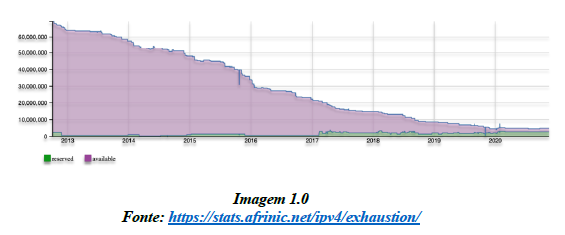
This version (IPv6) will allow more devices to connect to the internet and in a way will guarantee the transition from the previous version (IPv4) to the new version (IPv6) without major problems and technical difficulties.
As an example and using the LAN (local area network) in a residential environment, such as
illustrated in image 1.1, my ISP (Internet Service Provider) in the Netherlands, delivered to me in CPE (home) only IPv6, with a translation mechanism to be able to search for sites still in the IPv4 version, for example: 464XLAT. The reason for receiving IPv6 directly from my Internet Service Provider is because RIPE (entity responsible for allocating IP addresses in Europe) exhausted its IPv4 addresses on 25/11/2019 according to an article published in the media that can be viewed clicking here.
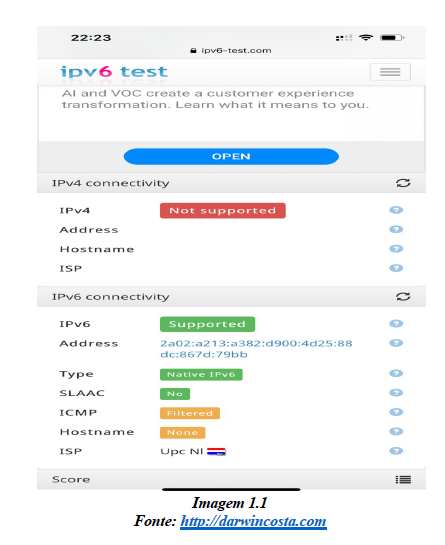
As we can also see in the sentence below, all autonomous systems are duly
regularly notified before and after exhaustion so that they are not taken by surprise: RIPE: Our announcement will not come as a surprise for network operators - IPv4 run-out has long been anticipated and planned for by the RIPE community. In summary, it is important to see that some mobile and fixed operators in Angola are already testing IPv6, as we can see in image 1.2.
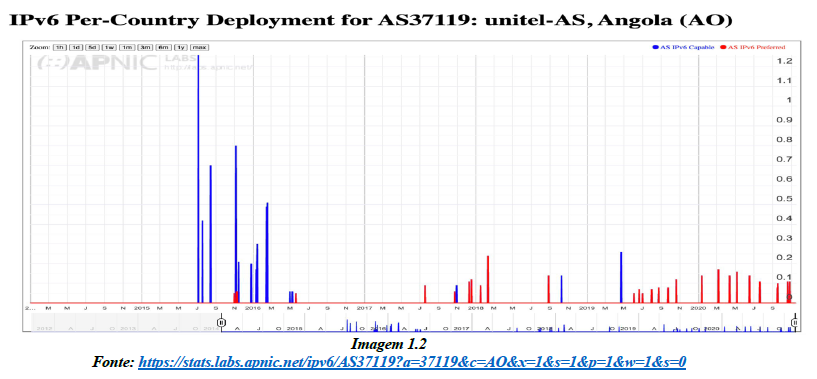
From the moment that fixed or mobile network operators implement the IPv6 version, their customers will be able to access sites that today unfortunately cannot access in Angola
such as:
We hope to have good news regarding the implementation of IPv6 at the annual event organized by AOPF (Angolan Peering Forum) & AONOG (Angolan Network Operators Group) at the end of 2021, and if you want to participate click here.
What are the current internet penetration rates in Angola compared to other African countries?
For a better context about the Internet penetration rate in Angola
we can consult the data of the Internet World Stats (image 1.3).
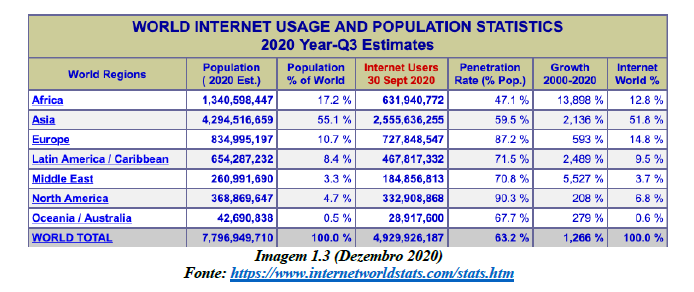
The African continent registered a growth of approximately 13.898% in what concerns the use of the Internet between 2000 - 2020. A very promising point and associated with a penetration rate of 47.1% over the total population.
In general, Africa still remains the continent with the least submarine connectivity, as well as terrestrial interconnectivity between countries that share a border. As a comparison and taking in some African markets like Ghana, Nigeria, Rwanda and South Africa, we illustrate in the image 1.4 statistical data referring to key countries in the continent vs Angola.
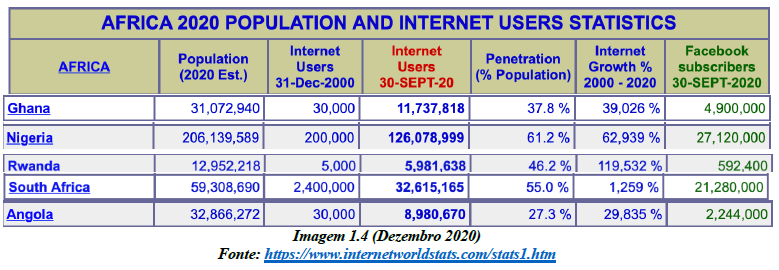
If we look at the table above we see that despite the population of Rwanda being the smallest in relation to the others - the growth of the Internet between 2000-2020 is much higher than the rest. Excluding South Africa for a moment because it is the most mature market in the table above, Angola was the country that between 2000 - 2020 had the lowest growth in Internet use by 29,835%. We can also verify from image 1.4 that Nigeria and South Africa are clearly the countries with the largest “Internet users”Not only for their population magnitude, but also for the fact that they are the most mature markets.
To what extent, projects from companies like Google, Facebook, Space X can contribute to transforming the internet into a universal right?
This is a very relevant and complex topic. Mostly because the Internet is a
world of networks and autonomous systems. These autonomous systems control and manage your network according to their own policies.
Projects like that of Google, Facebook e Space X they are quite interesting because they fill a gap in the value chain that was not previously assured. If they are going to make the Internet a Universal right, I believe that it is still premature to have this approach, but certainly they will have to respect some basic principles of the Internet as there is always the question of commercial interest.
The United Nations (UN) declared in 2011 that access to the Internet is a
human right. But until then, we must follow the following points:
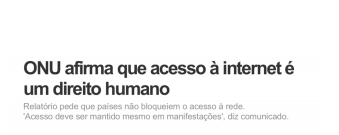
- A - Freedom, privacy and human rights: The use of the Internet must be guided by the principles of freedom of expression, privacy of the individual and respect for human rights, recognizing them as fundamental to the preservation of a just and democratic society.
- B - Democratic and collaborative governance: Internet governance must be exercised in a transparent, multilateral and democratic manner, with the participation of the various sectors of society, preserving and stimulating its character of collective creation.
- C - Universality: Access to the Internet must be universal so that it can be a means for social and human development, contributing to the construction of an inclusive and non-discriminatory society for the benefit of all.
- D - Diversity: Cultural diversity must be respected and preserved and its expression must be stimulated, without the imposition of beliefs, customs or values.
- E - Innovation: We must always promote the continuous evolution and wide dissemination of new technologies and models for use and access.
- F - Net neutrality: Filtering or traffic privileges must respect only technical and ethical criteria, and political, commercial, religious, cultural reasons, or any other form of discrimination or favoring, are not admissible.
- G - Inimputability of the network: The fight against illicit acts in the network must reach those responsible in the end and not the means of access and transport, always preserving the main principles of defense of freedom, privacy and respect for human rights.
- H - Functionality, security and stability: The global stability, security and functionality of the network must be actively preserved through technical measures compatible with international standards and encouraging the use of good practices.
- I - Standardization and interoperability: The Internet must be based on open standards that allow interoperability and the participation of all in its development.
- J - Legal and regulatory environment: The legal environment, in turn, must, through adequate regulation, preserve the dynamics of the Internet as a space for collaboration.
Finally, if companies like Google, Facebook, Space X or any other respect all these points, so I see it as a good indicator to make the Internet a universal right.
In parallel, these entities have developed projects in recent years that are technologically “state of art”. A great example is the construction of the submarine system 2AFRICA by Facebook, which will cover 23 countries on the East and West African coast with 37,000km in length, capacity of 180Tbps, and 16 fiber pairs, including the new SDM technology (Spatial Division Multiplexing).


![[Angola Startup Summit] 2024 Edition with reduction of startups](https://www.menosfios.com/wp-content/uploads/2024/04/Imagem-do-WhatsApp-de-2023-04-27-as-10.44.31-1-218x150.jpg)




